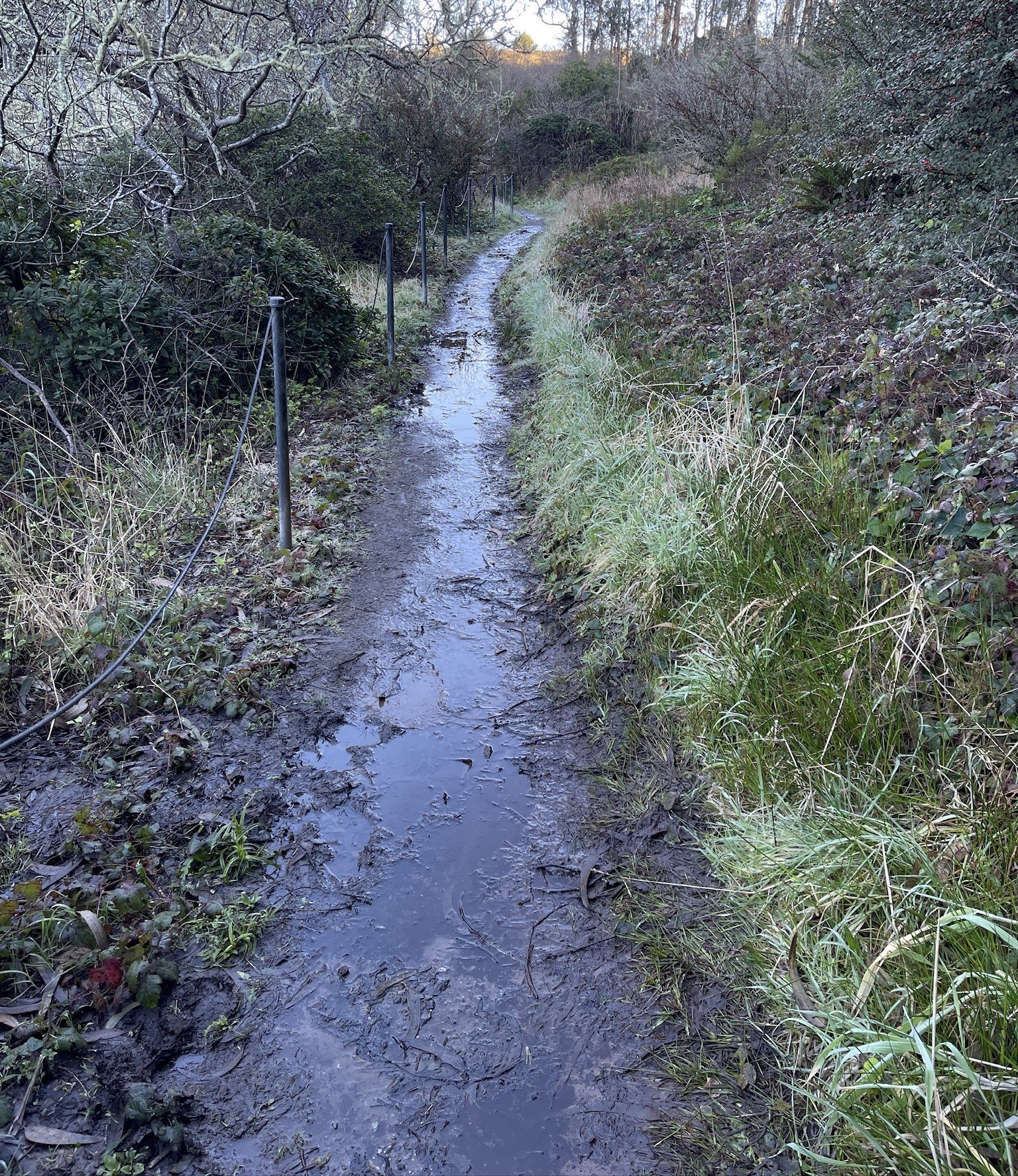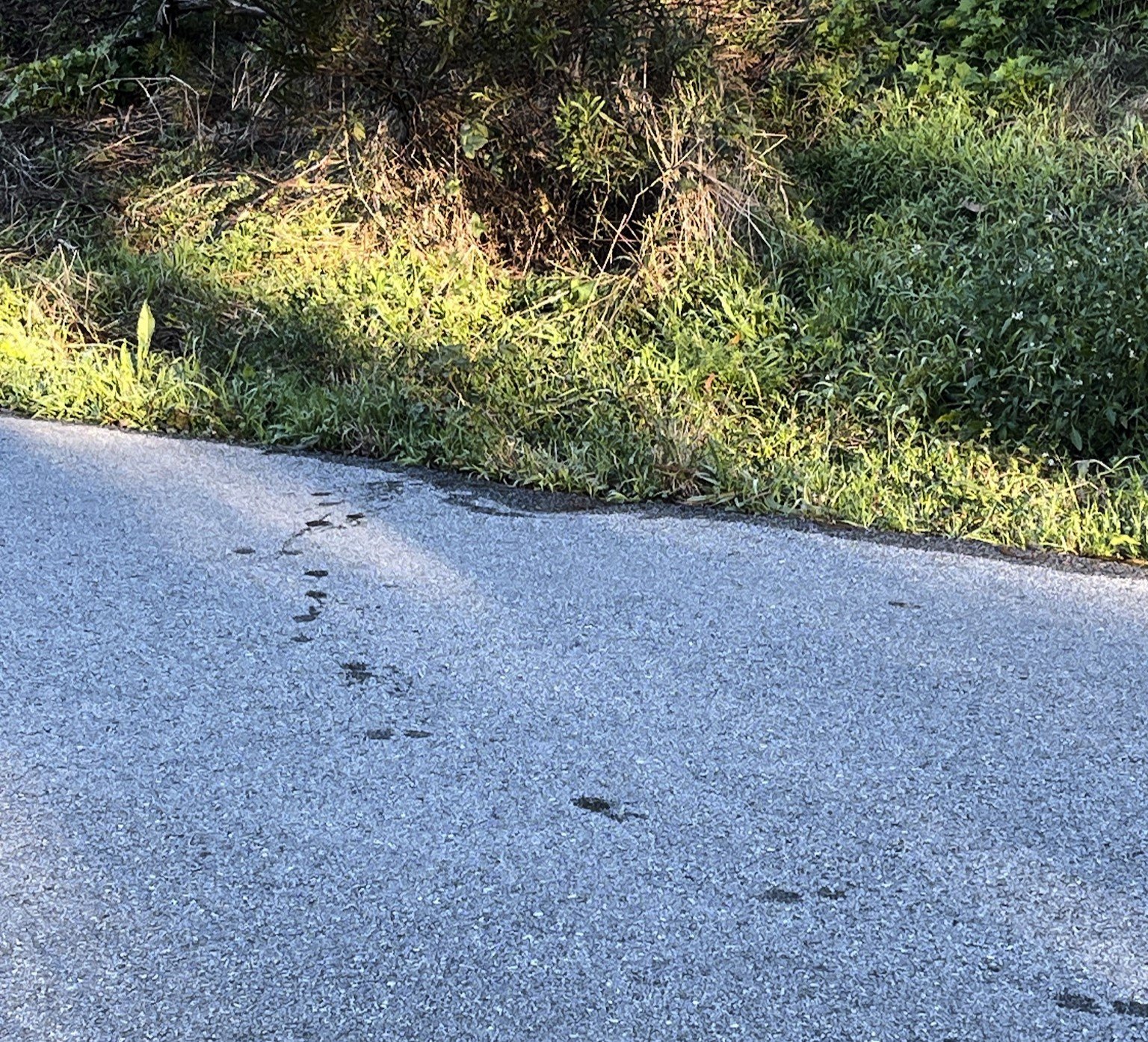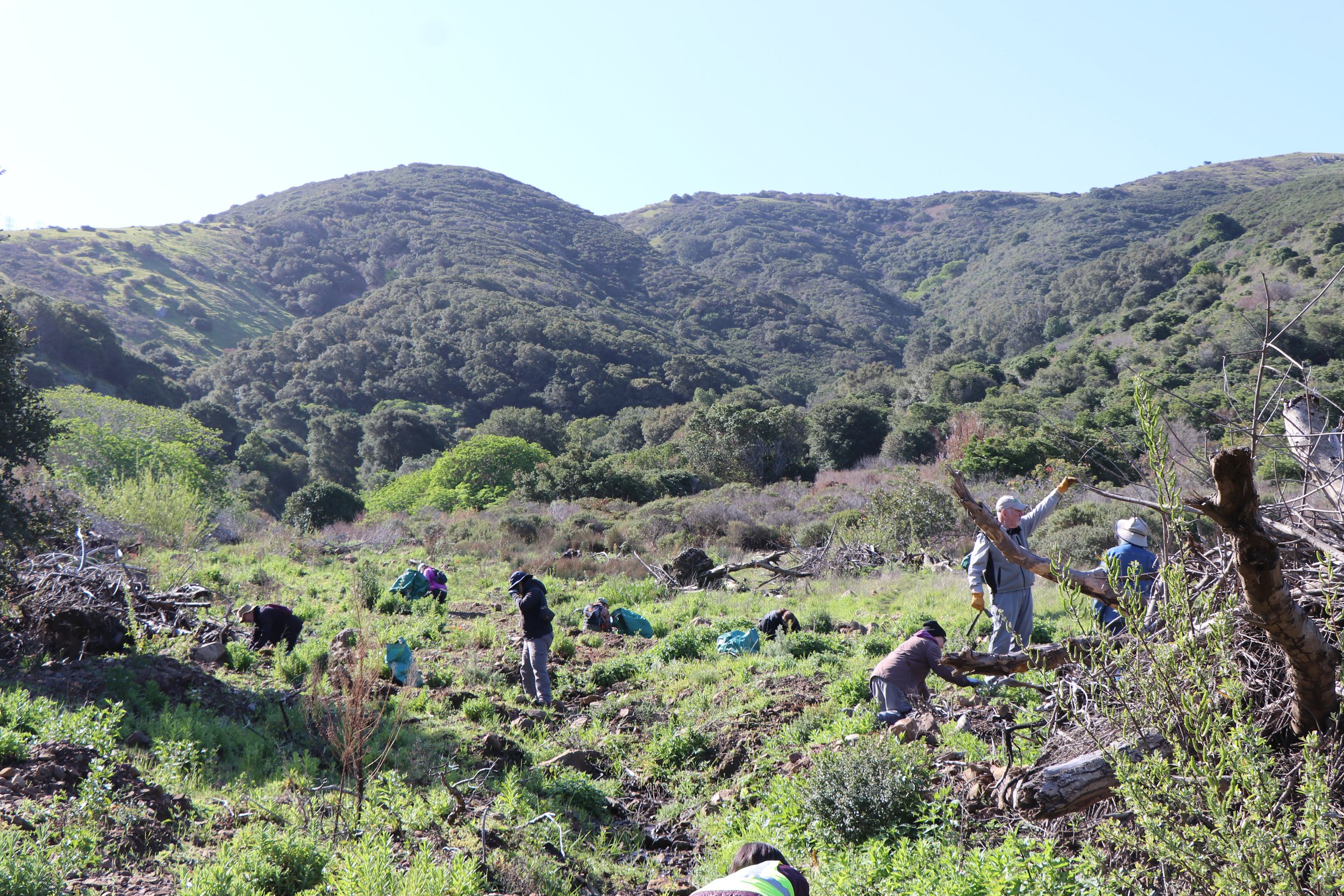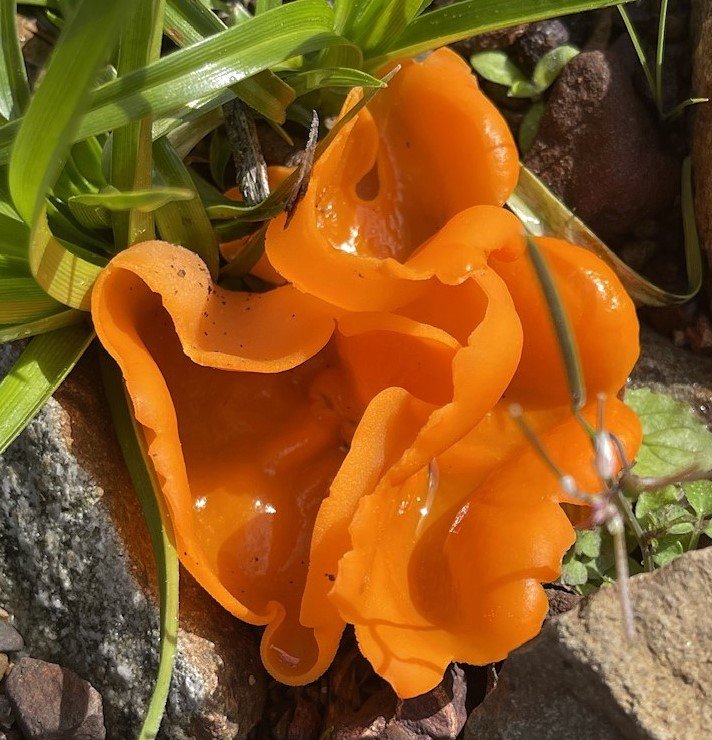Doug's Mountain Journal
A Chronicle of Natural History on San Bruno Mountain
Doug Allshouse has been writing his seasonal Mountain Journal for many years. We are very pleased to share his reflections on the natural history of the Mountain. Together with David Nelson, he wrote San Bruno Mountain: A Guide to the Flora and Fauna. The book was published by Heyday Books in November 2022 and can be purchased here.
Winter 2024
Just when you think you’ve seen it all, Mother Nature throws you another curve ball. Hydro-logically speaking, this has been an incredible year. After the wettest season in ten years, this season has settled down a bit, but you wouldn’t know it by the standing water and muddy spots on the upper portion of the Bog Trail. Those trails-turned-into-creeks scenarios are generally reserved for the lower portions of the Bog Trail where the high waters settle before finding their way into Colma Creek. And a drainage ditch on the Old Guadalupe Trail never dried up in 2023 and is flowing and flourishing with this season’s rains.
The common law of our local weather has been turned on its head (again). That law loosely states that December is the wettest month of the season. It only took the first five days of February to pass the 21 days of precipitation in December to make February the wettest month of the season by 2.66 inches. That has only happened two other times in the eleven seasons that I have been keeping records. In 2013-2014 and 2018-2019. The first 22 days of the month had 21 days of precipitation!
Another loose law of mine, gained through four decades of experience, is that when rain hits the twenty-inch mark all the seeps, springs, and creeks really get going. A storm in November and a few in December that totaled 12.89 inches of rain managed to get things going pretty good. Throw in a decent January (4.96) ,an amazing February (8.52), and 2.11 inches in March for 25.89 inches of rain and there is water everywhere. What is happening is that the water table was so high from last season’s 37 inches that it took half as much rainfall to get this maximum effect. The headwaters of Colma Creek are north and east of the Day Camp forming a large bowl that collects water and sends it underground in several directions. The water table is very high in that area. There are several springs that daylight year-round from above the two bridges and an annual spring in April Brook that keeps Colma Creek going year-round.
A walk in the early morning before the sun rises can lead to a stunning sunrise or a magical moment or two. The trail on the west side of Colma Creek makes a 180-degree turn to the lower bridge and on this particular morning as I rounded the curve I could hear a robin singing in a cypress tree while enjoying the rippling sound of creek water cascading over the falls just above the bridge. It was perfect harmony, but the fun didn’t stop. As I was homeward bound on the upper Bog Trail I heard a coyote howling up in the western Saddle. A few minutes later I made it to the Old Guadalupe Trail, and there was my coyote walking towards me until he made an abrupt right turn headed downhill toward the Parkway. On the road were his wet paw prints. I must admit that I am hearing coyotes on a more-frequent basis than ever before; such mesmerizing ear candy!
It’s that time of year when our local birds are warming up to breeding and our over-wintering migrants are getting serious about heading north. On the locals’ scene I spotted a Northern Mockingbird at the Day Camp. On the Saddle I saw a Spotted Towhee and a California Thrasher. I also heard a thrasher on the ridge above Nine Fern Rock. I made the first observation of a California Thrasher on April 14, 1996 in Devil’s Arroyo and it’s nice to know that they are still here and thriving. In late February, on two occasions, I heard hundreds of migrating American Robins chattering in the trees in Fog Forest, an overwhelming sound. In early March a rare sound of a Pacific Wren caught my ear as well as the trill of an Orange-crowned Warbler. Hopefully, the Wilson’s Warblers will be here soon. These sounds remind me of what I took for granted years ago. Unfortunately, those sounds were far more common and I miss the song of an Olive-sided Flycatcher’s wit-wee-beer, or the witchy-witchy-witch of the Common Yellowthroat. The dearth of birds on the Mountain has resulted in a decline of the population and species diversity. Even Starlings—the birding-world equivalent of gorse or poison hemlock—do not nest here anymore. That should make me feel ecstatic, but sometimes I think I’d trade that feeling for the way it used to be. I miss the pair of Bullock’s Orioles that used to nest high in a Sitka willow in the Day Camp. I remember that one year they decorated the exterior of their nest with green, plastic Easter-basket grass; such an artistic touch!
I have been walking the Mountain(s) since 1980 so I have seen many changes. One of them is the demise of Willow Pond, a seasonal pond at the very western edge of the Saddle Trail. Back in the “Old Days” the pond was open and visible from the trail on its east side. The west side had a couple of eponymous willows. It would fill up with rain water during the winter and a mated pair of Mallards would occupy the pond for a few weeks. One morning as I was walking down the trail I heard quacking sounds to the east of me. As I looked toward the sounds I saw the two mallards flying west toward me. They flew right into the pond and I think they were returning from a feeding trip to the headwaters area northeast of the day camp that turns into a marsh in the winter. These days it is difficult if, not impossible, to even see the pond since the willows have completely engulfed it. Darn, I miss those ducks.
I would like to give a shout-out to David Schmidt of the Yerba Buena chapter of the California Native Plant Society, Ariel Cherbowsky of Mountain Watch, and Candace Low, ecology instructor at SFSU and some of her students for two work days last September and November pulling poison hemlock from lower Buckeye Canyon. Thousands of plants were removed and no longer pose a threat as large colonies of this pernicious and deadly weed. I have been doing regular reconnaissance visits to the canyon and am happy to report that native species outnumber non-native species 20 to 7, almost 3-1. The new non-native culprit is nightshade (Solanum furcatum); David has already begun to deal with it and together with Mountain Watch had a workday in mid-March. It is not a surprise that nightshade is trying to take over. The first rains after the October, 2020 fire adjacent to the day camp gave birth to thousands of nightshade plants.
Visiting lower Buckeye Canyon on a regular basis is really important to document its recovery from last year’s mudslide. Not only do we get a clear picture of its metamorphosis but sometimes we see something new. In late February David Nelson and I were wandering about in lower Buckeye looking at rocks, plants, and liverworts when we discovered a bright-orange fungus which is called orange peel fungus (Aleuria aurantia). Arantia refers to the Latin word for the color orange. It is quite common in Britain and Ireland but also grows in North America and south Chile. It starts as a cup fungus that develops folds which give it the appearance of an orange peel. It is stem-less and lays on the ground. It is a vital tertiary decomposer that depends on primary and secondary decomposers to do their job. Then it breaks down the complex molecules and absorbs some of them and the remaining carbon, nitrogen and hydrogen is returned to the ground, which enriches the soil. They are one of the few edible cup fungi but most people avoid them because they break so easily. They are so lovely that I think our eyes benefit more from them than our stomachs.
I am looking forward to giving some hikes this spring, seeing the wildflowers, and telling some stories. I encourage you to do the same and enjoy this wonderful gift that is San Bruno Mountain.
See you on the Mountain…






